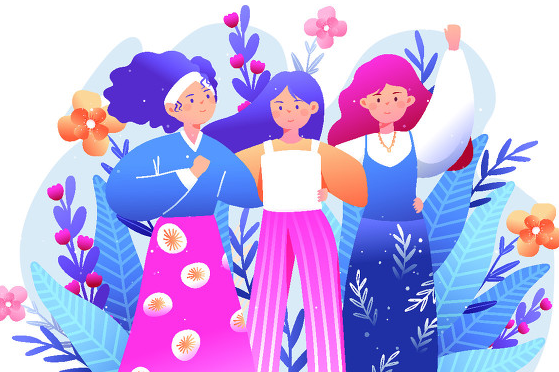Chinese woman wins Nobel Prize for discovering artemisinin


It is a day Tu Youyou will never forget. On October 5, 2015, the Chinese scientist won the Nobel Prize in physiology or medicine "for discoveries concerning a novel therapy against malaria." Tu became the first Chinese woman to win a Nobel Prize in science. Her given name, Youyou, originates from a verse — "deer bleating and eating wormwood" — in the Book of Songs, a collection of ancient Chinese poetry and songs. In Chinese, Youyou mimics the bleating of the deer. It is an amazing coincidence that Tu has forged a close bond with wormwood throughout her life. The antimalarial drug, artemisinin, she discovered contains a Chinese medical herb called sweet wormwood, or Artemisia annua.
Never Too Late
Tu has devoted more than 40 years of her life to medical research. She is best known for discovering artemisinin (also known as qinghaosu in Chinese) and dihydroartemisinin, which are used to treat malaria.
Tu was born in 1930 in Ningbo, in East China's Zhejiang Province. Her father paid much attention to her education. She attended a private primary school when she was 6. She studied at Ningbo Yongjiang Girls' School. In 1951, she was admitted to the Department of Pharmacology of Peking University, where she studied pharmacognosy, the study of bioactive natural substances found in terrestrial and marine organisms, including plants, animals and microbes.
"That major was the most unpopular at that time," Tu says, when asked why she chose to study pharmacognosy. Actually, there was another reason; in 1946, she was infected with tuberculosis and she had to quit school. After two years of treatments, she finally recovered from the disease and she resumed her studies. As a result of her health issues, Tu developed an interest in medical science.
After she graduated from the university in 1955, she worked at the Institute of Chinese Materia Medica, under the China Academy of Chinese Medical Sciences.
In 1978, Tu's research team was honored at the national conference on science for their research into artemisinin. The next year, her research team won second prize at the National Invention Awards for discovering the antimalarial drug, artemisinin.
In 2011, Tu received the Lasker-DeBakey Clinical Medicine Research Award for "the discovery of artemisinin, a drug therapy for malaria that has saved millions of lives across the globe, especially in the developing world." She became the first native Chinese, who was educated and worked in China, to win the award.
In 2012, the All-China Women's Federation honored Tu as one of the 10 National March 8 Red-banner Pacesetters. This year, she was named one of the outstanding alumna of Peking University. She also won the Warren Alpert Foundation Prize in June for work that led to the development of artemisinin.
Yet, despite all of her achievements, Tu keeps a low profile. "The more honors you receive, the more responsibilities you have," she says.
"Tu won the Nobel Prize at the age of 85. It indicates that one should keep working hard, and it is never too late to succeed," says one of Tu's neighbors.
Tu has dedicated virtually all of her adult life to scientific research. In 1972, Tu went to Changjiang People's Hospital, in South China's Hainan Province, to conduct clinical research. She even took artemisinin herself to test the drug. As her husband, Li Tingzhao, was in Southwest China's Yunnan Province at that time, she sent her two daughters to live with their grandparents before she moved to Hainan. "The work was the top priority, so I was willing to sacrifice my personal life," Tu says.

Sweet Wormwood
Malaria is one of the most serious diseases. The World Health Organization (WHO)'s World Malaria Report 2011 indicated 216 million people suffered from malaria in 2010, and that 655,000 people died from the disease. Eighty-six percent of the decedents were children under age 5.
China implemented a medical-research project on May 23, 1967, in an effort to find a cure for malaria. The project was known as Project 523. Tu was recruited by the project in 1969. At that time, she had conducted research in phytochemistry (plant chemistry) for four years. She became head of the project's Chinese herbal medicine research team.
Tu found the key to beating the disease while she was reading ancient Chinese manuscripts. Tu and her team scoured numerous books about traditional Chinese medicine (TCM). In the Manual of Clinical Practice and Emergency Remedies, written in 340 by Ge Hong (284-364) of the East Jin Dynasty (317-420), she learned sweet wormwood, or qinghaoin Chinese, was used to treat malaria. It was the earliest record of the use of sweet wormwood to treat the disease. That method was also mentioned in medical books compiled during the Song (960-1279), Yuan (1271-1368) and Ming (1368-1644) dynasties.
Tu's team put sweet wormwood to the test. At first, the results were mixed. After numerous analyses and tests, the researchers, on November 8, 1972, identified an active compound in the plant that attacked malaria-causing parasites in the blood, and that compound later became known as artemisinin.
In October 1981, Tu, on behalf of her team, delivered a report on the chemical research into artemisinin at an international conference in Beijing. The conference was hosted by WHO Scientific Working Group for Malaria Chemotherapy (SWG-CHEMAL).
"The significance of the artemisinin discovery and the success of the artemisinin derivatives research lie in the drug's unique chemical structure, and its antimalarial mechanism of action, which is different from any of the known antimalarial drugs. This opens a new direction for the designing of future new antimalarial compounds," Professor Nitya Anand, chair of the conference, said at the time.
In 1995, after it verified the research results of Tu's team, WHO listed the Chinese-manufactured artemether, artesunate and combination artemether-lumefantrine in its ninth, 11th and 12th editions of Essential Medicines Lists. WHO recommended the drugs to the world. It was the first time a Chinese-made artemisinin-based antimalarial drug had been included on WHO's Essential Medicines List. The wide use of artemisinin-based drugs has significantly reduced the malaria-related mortality rate in the world.
Future
Tu lives a modest life in Beijing. Instead of her daily life, she cares more about the future development of TCM. "TCM is a great treasure. China should encourage young people to participate in the research into TCM. Of course, it will take a great deal of work (to conduct such research)," Tu says.
"I hope that a better motivation mechanism will be established to encourage the young generation of scientists to make greater contributions to society … As long as you work hard, you will make achievements," she adds.
Tu is a tenured researcher with the Institute of Chinese Materia Medica. She still conducts research into artemisinin -based drugs, and she says she hopes to make greater contributions in China's efforts to eradicate malaria. "In the face of honor, one should have a stronger sense of responsibility, and he/she should do his/her best work," Tu says.




